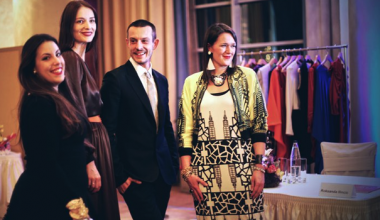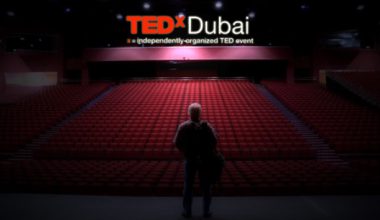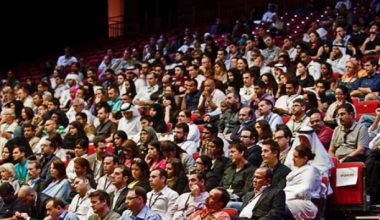The artwork that first greets visitors at MISK Art Institute’s current exhibition, Imprint, is an immersive installation—a dizzying light and sound vessel that encapsulates viewers in an alternate reality. Transcendence 2.0, created by Saudi artist Nasser Al Shemimry, is staged in a dark room with light projections that respond to sound in real time. Al Shemimry’s installation—eerily echoing the sci-fi aura of the current pandemic—primes the audience for an exhibition that marks a new age of media and artistic expression in the region.
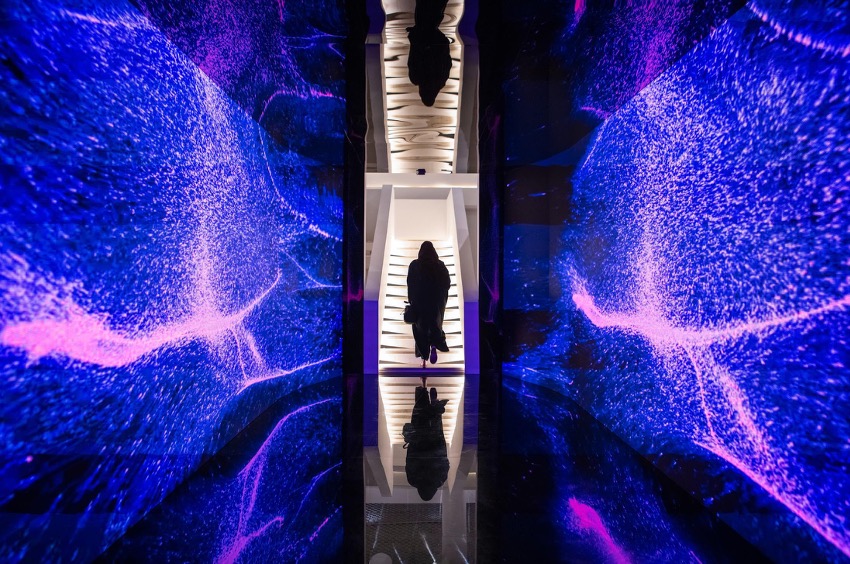
Curated by Bahraini curator, writer, and founder of artist platform, Too Far, Latifa Al Khalifa, Imprint is an exhibition of film, photography, and digital arts comprised of 17 artists from the Gulf. The exhibition demonstrates an evolving regional identity shaped by autonomous personal narrativesthat divert from characteristic Gulf values of traditionalism and conservatism. The exhibition’s thematic scope, re-envisioning ‘Khaleeji’ identity, coupled with its focus on photography and new media, places the participating artists in a central role as they author and document a new age of Gulf life.
The curator, Latifa, emphasizes the importance of openly discussing the paradigm shift that has allowed communities in the Gulf to be represented and fundamentally understood, more rawly than ever before. Prompted with the question of ‘identity,’ the artists in the exhibition extract elements of their personal histories, national identity, family lineage, and future projections to narrate an intimate view of belonging in the region. Peppered with imagery of Khaleeji rituals, colloquial dialogue, and sentimental locales, the exhibition weaves together a piercing and authentic collective voice.
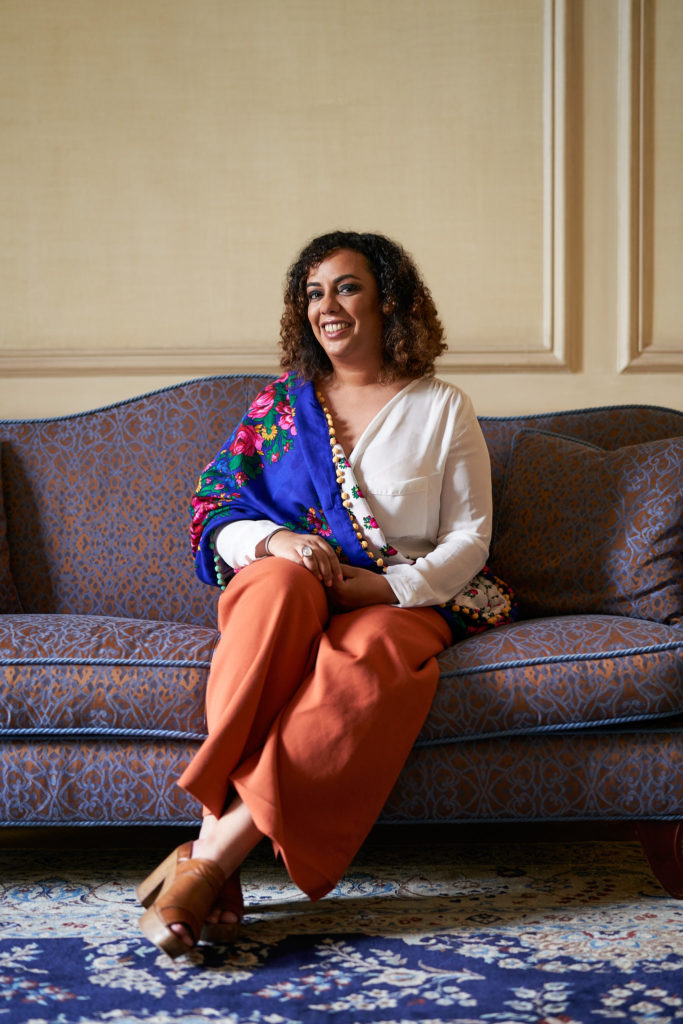
The artists in this exhibition contribute to four sub-categories: the past and memory, a reconstruction of the self, connections with nature, and mindful reflections. These categories are the blueprint through which the conversation on identity flows through the exhibit.
The exhibition, located at Prince Faisal bin Fahd Fine Arts Gallery in Riyadh, is a testament to Saudi’s rapidly evolving art scene. Organized by MISK Art Institute, an artist-centered cultural organization established by Crown Prince Mohammed bin Salman bin Abdulaziz Al Saud, the exhibit reveals grassroots artistic activity in Saudi Arabia and particularly, in Riyadh.
The exhibition venue, Prince Faisal bin Fahd Fine Arts Hall, a space first inaugurated in 1985, was recently reopened to the Riyadh art scene, echoing a resurgence of the local art scene. The newly remodeled space, with its sentimental value as Riyadh’s formative art hub, bolsters the exhibition’s focus on re-envisioning cultural foundations and starting a new chapter. Veteran Saudi artist, Faisal Samra, who exhibited in the same venue during its early years, is a participant in the current exhibition — yet his evolved artistic persona, apparent through Schizophrenia, affirms Saudi’s art scene’s shifting embrace of artist-led dialogue.
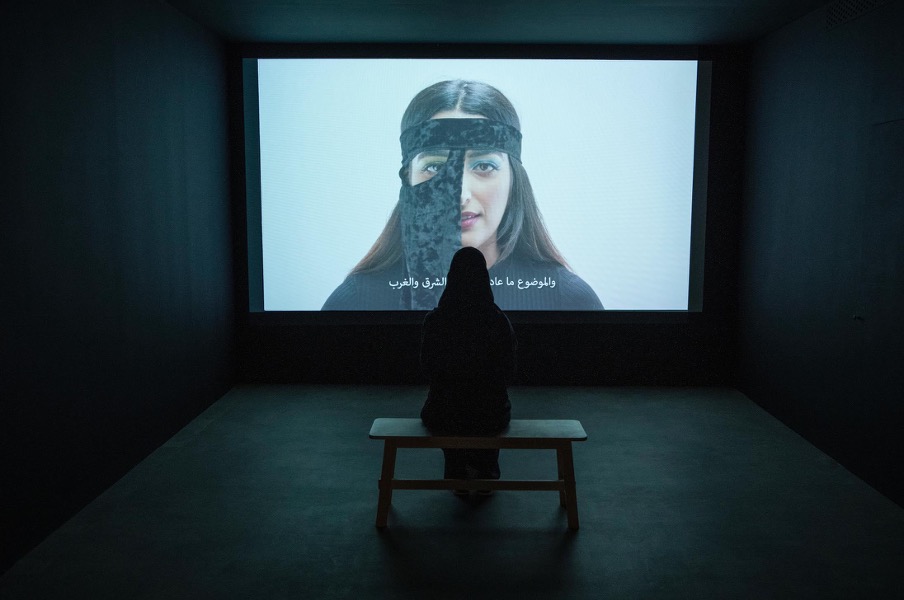
Imprint opens with an immersive installation on the ground floor, leading to a second floor where the exhibition continues. Art viewing amid a once-in-a-century global health crisis is an entirely novel experience. While the entire world has heavily shifted to remote interaction, the exhibition nonetheless, can be experienced entirely digitally in a 3D viewing room on MISK’S website. Moreover, set against the current global events where the imaginary has become the ordinary, and venturing into a world outside our immediate bubble is met with obstacles — the reliance of screens, photographs, and technology has taken an even more prominent role in dictating the state of our world. The exhibition’s focus on photography, video, and new media at the forefront provides artists storytelling license in a more immediate manner and their artworks invite viewers into their private worlds as they interpret it.
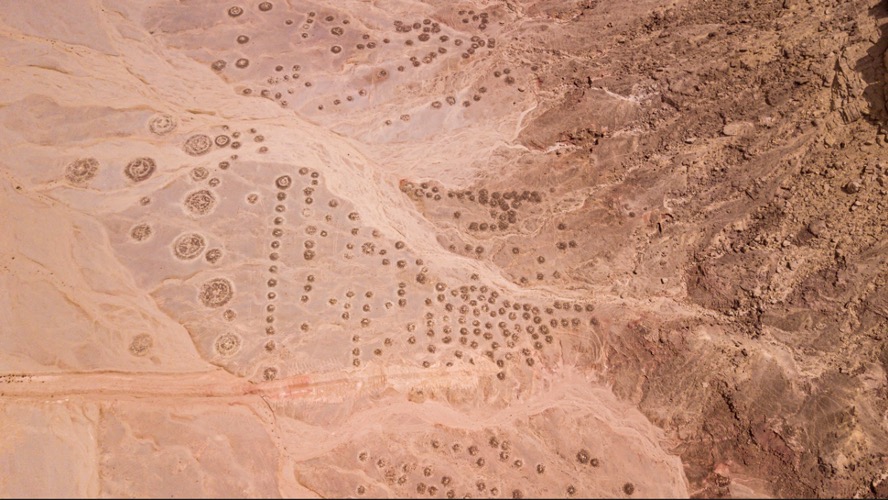
The imprint of cultural identity is viscerally experienced through reflecting on its past. Artist and researcher Moath Alofi’s video Thad, memorializes ancient civilizations that occupied the Arabian Peninsula through revisiting artifacts located in the vast Saudi desert. The video presents aerial view drone imagery of geoglyphs near Madinah, which were made 2,000 years ago by the Thamud tribe. In the video, a man walks around the ruins in awe and places his hand on the artifacts as a gesture of connection to a grand ancestral lineage. In a similar vein, but with an opposing subject matter, Ahad Al Amoudi’s video, NIUN, connects to her succeeding lineage through fabricating footage of an imaginary civilization inhabiting desert lands of Saudi Arabia. Her projection of future descendants in Saudi, mirroring qualities of alien creatures, evokes an unsettling sense of isolation and confusion.
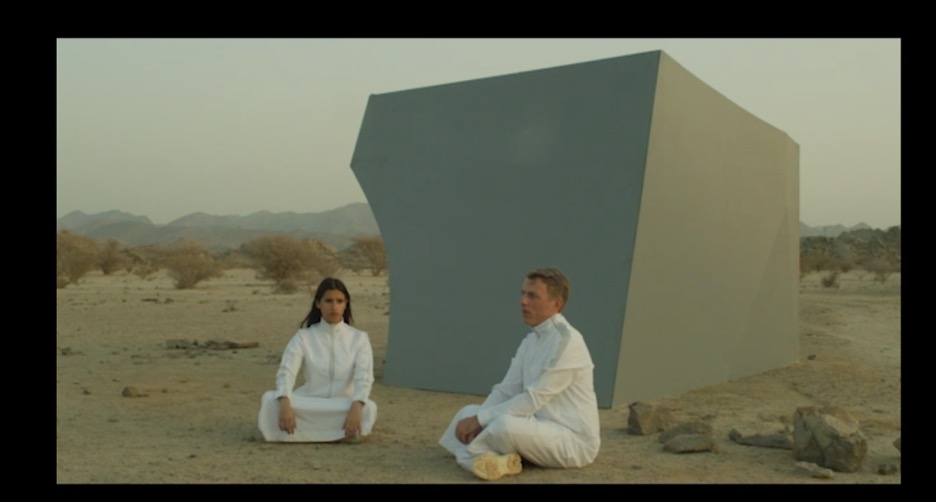
While some reflect on the past and imagine the future to grasp emblems of Gulf identity, other artists look inward to present intimate portraits of Gulf life. Reem Al Nasser’s series, Al Fulle, documents traditional bridal dress in the southern Saudi province of Masar. Al Nasser captures the women in the midst of a ritual dance in blurred, low-exposure photographs set against a black backdrop. The low exposure veils the women’s faces but illuminates the detail and ornamentation of their dresses, eliciting the importance of the wedding as a transitory experience in a Khaleeji woman’s life. In another vignette of womanhood in the Gulf, Bahraini artist, Mashael Al Saie, invites viewers into an intimate memory of a hair oiling ritual in her video Dihin. Laced with audio clips of her grandmother’s loving messages and advice, the predominant message centers upon the importance of beauty standards and self presentation of Khaleeji women.
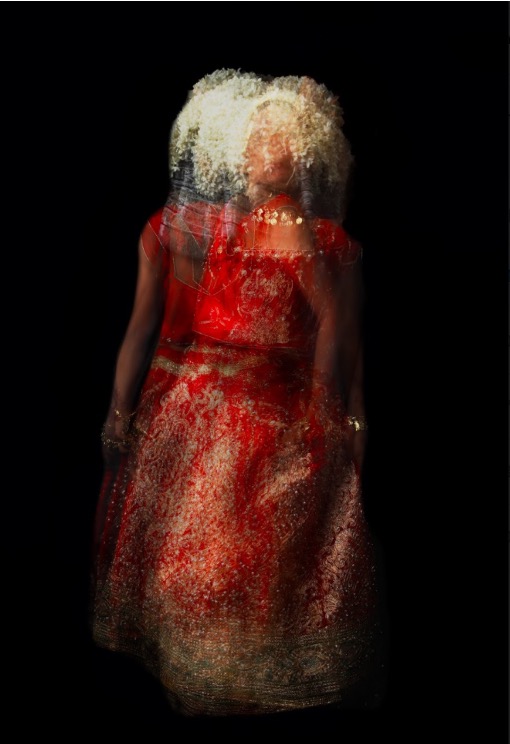
At a time when most shows have been delayed or canceled due to the pandemic, curator Latifa Al Khalifa manages to execute a successful exhibition, attracting a widespread online audience of almost 30,000 views to date. While facing obvious obstacles due to COVID restrictions, Latifa expresses her surprise about the reception of the exhibition: the scheduled tours were fully booked—within two weeks of the exhibition opening over 10,000 visitors saw the show in digital form—and the docents were very enthusiastic about the exhibition material. Most importantly, as a Bahraini, Latifa emphasizes her pride in offering emergent Bahraini artists with a notable platform to showcase their work.
The exhibition is currently on view at Prince Faisal Bin Fahad Fine Arts Hall in Riyadh and online until Jan. 28, 2021.
For more information, click here.
Words: Zain Al Saie
Images: Courtesy of MISK Art Institute





